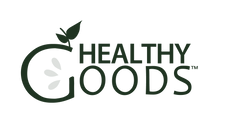Keeping your family healthy and your home clean can seem like an overwhelming job, but there are some things you can do to give your family a better chance of staying healthy.
Most Importantly, Choose Toxin-Free Cleaning Supplies
I'm a huge advocate of healthy, nontoxic cleaning supplies, and here's why...over 150 chemicals found in the average American home have been linked to allergies, psychological disorders, birth defects, and cancers. Here's more information about the surprising toxicity of everyday products. Toxin exposure is also linked to autoimmune conditions. You can make your own toxic-free cleaners using simple ingredients like vinegar and baking soda, or if you aren't into DIY, Grab Green is a good brand.
Hand Washing
It goes without saying, regular hand washing is the key to stopping germs from spreading, especially for people who are already sick. Always wash your own and your children’s hands before eating.
The Floors
Think about how germs can enter your home. Your shoes can track germs throughout your house and mash them into the carpet, floors, and furniture where your kids play every day. Make it a habit for guests and family members to remove their shoes at the door as soon as they enter your home.
Your Child’s Stuffed Animals and Blankie
Cleaning your little one’s most beloved “lovey” is particularly important if you have little kids who constantly carry their beloved toys everywhere. These items are a playground for germs and bacteria, and to make matters worse, kids kiss, hug, and snuggle these "friends" all the time.
The Kitchen
Countertops: Wipe down your countertops with a clean cloth soaked in warm, soapy water and then dry thoroughly.
If you’re cooking food that hides potential bacteria, like meat, eggs, or fish, use vinegar as a much more eco-friendly option to clean and properly disinfect the area. The same method can be applied to freezers and refrigerators, other areas exposed to germ contamination.
Sink: All the stuff you rinse in the sink, such as shrimp or raw chicken, leave behind bacteria and raw juices. Disinfect with bleach and water right after you’ve handled or exposed your sink to raw meat, eggs, and poultry.
Garbage disposal: When you turn on the garbage disposal, a whirlwind of bacteria sprays up each time the disposal is on, leaving a germ-heavy mist hanging over the kitchen. Make sure the disposal opening is properly covered before flipping the switch on.
Sponges and Dishrags: They’re a breeding ground for germs and pathogens, but you can keep yourself healthy and prevent hte need for frequent replacement if you sanitize them.
To kill bacteria, microwave a wet sponge (not dry—they’ll catch on fire!) for one to two minutes. You can also clean your sponges by boiling them in water or soaking in vinegar.
Cutting board: If possible, have two dedicated cutting boards—one for raw meats and one for raw fruits, vegetables, and bread. Cooking kills the germs in meat, but vegetables are often served raw and can be contaminated with bacteria from meat juices if the same board is used for each.
After each use, scrub the cutting board with hot, soapy water. Periodically sanitize plastic cutting boards with a vinegar/water solution (1 to 3 ratio) for wood boards. Spray the surface and allow to sit for several minutes, rinse with clean water and air dry. Allow the cutting board to dry completely; bacteria will die after a few hours when deprived of moisture and heat.
The Bathroom
Your bathroom is possibly the most popular spot in the house for germs.
Toilet: Put your toilet lid down before flushing! Here’s why…toilets contain a bacteria line just below the water level, called the biofilm. This bacterial biofilm is very difficult to remove, even with household cleaners. Once airborne, these tiny droplets land on everything within the flush zone: toys, cups, toothbrushes, etc. and some pathogens live for a week on surfaces. Gross, right?!
Each toilet flush creates an unseen mist, which can travel 15 feet from the toilet bowl. Putting the toilet lid down before you flush the toilet will prevent some fecal particles from floating and landing on every bathroom surface. Also, keep your toothbrush covered or in the medicine cabinet! Clean inside your toilet at least twice a week with a disinfectant.
All Bathroom Surfaces: I suggest cleaning them regularly. This includes the door handle, sink, faucets, floor, shower, and tub. To avoid transferring germs, clean the sink and toilet with separate cloths. Using vinegar is highly recommended, which is an eco-friendly disinfectant often much more reliable than other expensive commercial cleaning products.
Killing 100% of the germs in your house is impossible. However, with a little effort, you can keep a clean home and do your best to prevent illness from taking over your family.
In Health and Happiness,
Kelly Harrington, MS, RDN
Registered Dietitian Nutritionist for Healthy Goods

